On February 19, Professor Shen Yang from Shanghai Jiao Tong University shared her new book New Era of Childbearing, co-authoring with Jiang Lai. Drawing on interview data from 41 middle-class families across regions such as Shanghai, Guangdong, and Jiangxi between 2017 and 2024, she explored the new changes and unchanged issues in reproductive decision-making, gender power dynamics, and career-family balance within middle-class families in China, following the two-child policy.
The Chapter 1 mainly talks about reproductive choice. The data reveals that most of wives among the interviewees are the primary initiator of the decision to have a second child. The motivations for having a second child can be categorized into explicit reasons/implicit reasons and self-narrated accounts/conditions, including the fear of losing the only child, impacts of postgraduate education and so on. Furthermore, the motivations for choosing the mother’s surname include patriarchal family expectations, filial piety, gender equality, and randomness. For example, some wives chose the mother’s surname due to the superior economic conditions and significant contributions of the paternal family to child-rearing.
Moreover, the research indicates that, despite the majority of female interviewees continuing to work full-time after having a second child, their career trajectories showed diversity and complexity in the Chapter 4. For instance, one woman experienced a decline in income with each job change following the birth of her second child, while her husband’s career continued to advance. This phenomenon reflects the “motherhood penalty,” where mothers often face challenges in career development or a reduction in income after childbirth. In contrast, fathers may gain the “fatherhood bonus” due to their increased focus on work.
Overall, Professor Shen Yang’s research reveals that, although the gradual rise of gender equality concepts, in the context of two-child policy, traditional gender division of labor and the disadvantages faced by mothers in career development remain deeply entrenched. Additionally, future research should focus on the lives and experiences of women from different social classes under the changing reproductive policies.
Written by: LI, Rongrong
This week, Professor Yang SHEN presented the book she co-wrote, New Era of Childbearing, to discuss the issues of fertility among urban women in China. Through the situation of reproductive decision-making, surname negotiation of the child, and the career trajectories within the family, to analyzing the family’s power relations and social structure behind it. These address the characteristics of childbearing nowadays, and the existing problem of gender inequality.
According to the authors’ interviews with 41 middle-class families, the reproductive decision is mainly initiated by the wife to have a second child. Motivations behind the fertility choice include fear of losing the only child“shidu”, thinking that having two babies is good for the child’s mental development, etc. These reproduction decisions reflected the women’s diverse thinking on expectations surrounding childbirth, along with the influence of traditional beliefs, social environment, and family factors. In addition, 8 out of 41 families have the child take their mother’s surname; it can be driven by the superior economic conditions of the mother’s family, gender equality, filial piety, and other factors.
In terms of career development, childbirth often leads to career adjustments and income reduction for women, and there is a phenomenon of the “motherhood penalty.” In the case of Hong, she changed her career due to childbirth, and her income decreased while her husband’s career continued to develop. The career gap and salary payment between this couple continually widened. However, career recovery after childbirth is more likely easier for singleton daughters.
Overall, there are changes in childbirth in the new era, such as an increase in highly educated women who continue to work as full-time mothers after their second childbirth. The majority of the mothers work in the government, public institutions, or state-owned enterprises which are relatively stable. On the other hand, despite the emergence of gender equality concepts, gender inequality still exists, including the uneven division of household chores.
Written by: NI, Yi
2025年2月19日,上海交通大学沈洋教授围绕其新著《生育新时代》,以中国家庭计划政策转型(从独生子女到三胎政策)为背景,开展了有关中产阶级家庭中女性的生育决策与工作-家庭动态的讲座。本次讲座以性别视角为核心,结合权力关系理论与代理/结构二元性框架,揭示了政策变迁下女性在家庭与社会中的复杂处境。
沈教授聚焦 41个中产阶级家庭(2017—2024年追踪),研究了高学历职业女性在二孩政策下的生育决策。她首先指出,生育决策驱动力有显性和隐性逻辑,且生育主导权多在女性或其原生家庭。此外,姓氏谈判作为生育决策的延伸,成为分析性别权力关系的典型案例。研究发现8个家庭的第二子女随母姓,动机有父权、孝道、性别平等诉求和随意性选择四类。这反映出母姓接受度虽因城市女性地位上升而提高,但传统父权制仍占主导。
职业与家庭平衡是讲座的另一重点,多数受访者生育二胎后仍全职工作,但职业轨迹多样,城市独生子女家庭的女性晋升或恢复可能性大,而生育可能阻碍其将教育优势转化为资本。从社会层面看,生育现象有新变化,2016—2017年体制内高学历二孩母亲占60%,孩子随母姓情况也有增多。然而,性别不平等依旧存在,家庭劳动分工不均,母亲常为育儿牺牲职业发展。
最后,沈教授指出,中国生育政策转型呈现 “新”“旧” 并存的性别图景,新趋势是母姓接受度上升、高知女性体制内生育反弹能力增强;旧结构是家庭性别分工僵化等问题突出。这表明政策松绑虽有积极意义,但实现深层次性别平等还需从劳动力市场到家庭政策的结构性改革。这次讲座不仅为性别理论提供了本土化案例,亦为政策制定者敲响警钟:若无法打破“工作-家庭”对女性的双重剥削,所谓“新时代”恐难真正到来。
Written by: MOU, Jingfei
在本周的讲座中,沈洋教授介绍了她和蒋莱教授共同编写的书籍《新生育时代》的第一和第四部分。这本书采用了半结构化访谈和参与观察的研究方法,基于对41个中产家庭的访谈,讲述了中国城市女性的生育选择、母女关系、性别平等、母亲身份的困境等复杂现象。
首先,沈洋教授提到,书籍封面采用了非常有创意的设计——一个类似验孕棒的图案,这种设计和书中的核心主题“是否选择生育”相呼应。沈洋教授提到,尽管书中并没有提出非常清晰的理论框架,但写作方法还收受到了福柯权力关系理论的影响,特别关注不同家庭成员之间的权力动态。并且,采用能动性和结构的女权主义视角,强调能动性和结构是相辅相成的。她通过对这一理论的运用,分析了女性如何在结构性制约中使用能动性,尤其是面临生育决策时。
其次,在讲座中,沈洋教授详细探讨了家庭内外部的不同力量是如何影响了生育决策。通过访谈,她发现,许多高学历女性决定生“二孩”时,原因多样,例如,担心失独、意外之喜、小孩教育等。高学历也意味着有更好的经济能力和时间管理能力,因此让她们有信心养育二胎。同时,她提到,尽管中国现代社会中,孩子随父姓仍是主流,但随母姓的现象也越来越多,是出于父权 妻子父亲凭借较高的经济地位和社会地位,希望延续姓氏)、孝道 妻子感恩父母的养育)、性别平等 夫妻双方认为更公平)、等多种原因,而这类家庭,大多是因为获得了更多的母系支持,并且妻子多为独生女。
职业发展和家庭平衡是另一个重点。沈洋教授通过夫妻为同学的案例,讲述了生育对职业轨迹的影响。女性为了平衡家庭多次换工作,导致收入降低。而男性事业持续发展,这种对比体现了“母亲惩罚”和 “父亲奖励”现象。职业女性生育之后的职业发展分为增强、反弹、中断和停滞,她们常常面临育儿和工作的多种约束。
总的来说,通过这次讲座,我认识到,虽然性别平等观念在不断发展,但传统的父权文化仍然在影响着我们家庭。沈洋教授的研究为我们理解中国现代社会的生育观念和家庭性别角色的转变提供了宝贵视角,并启发了我们如何在家庭中实现真正的性别平等。
Written by: XU, Qianrui


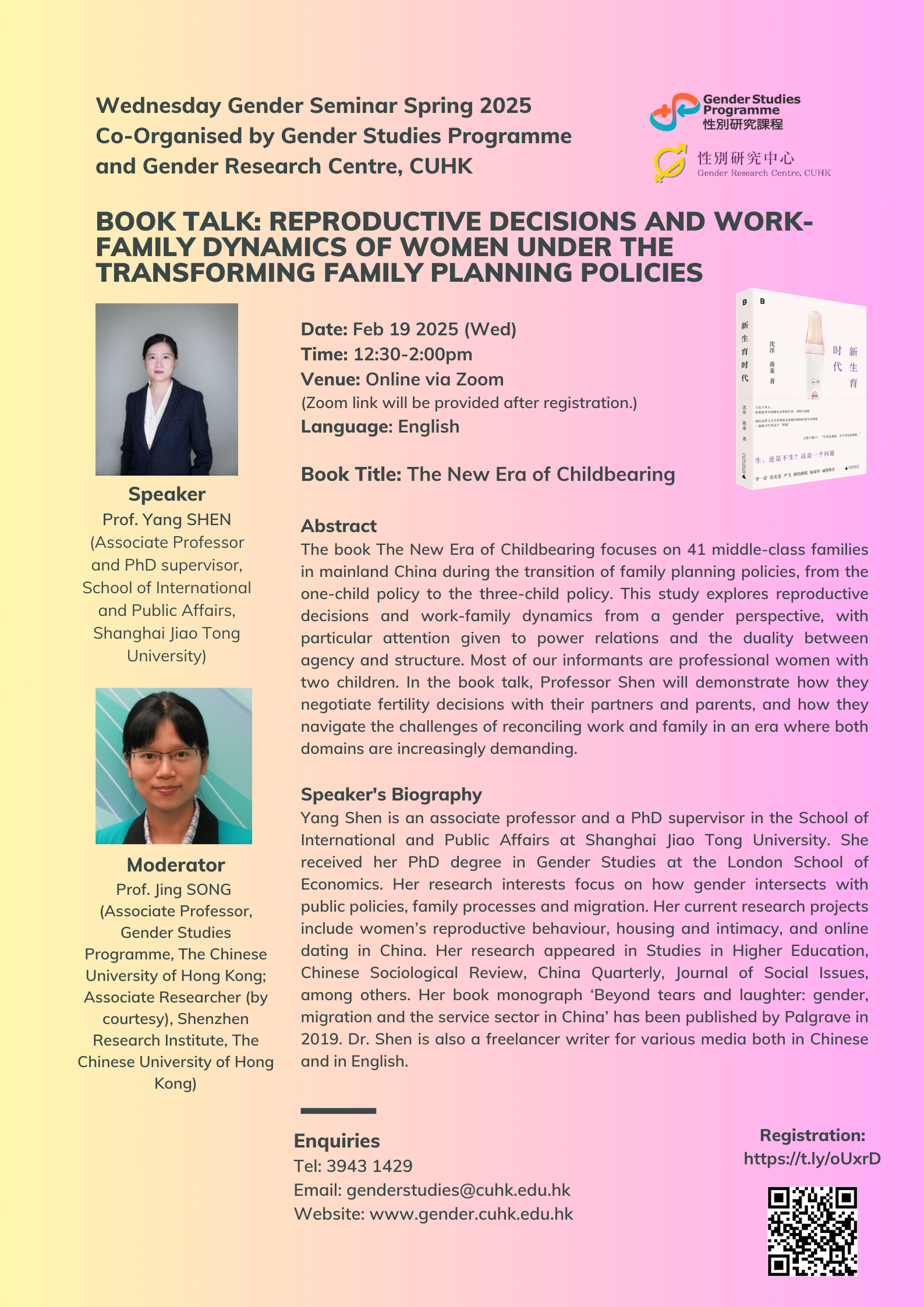
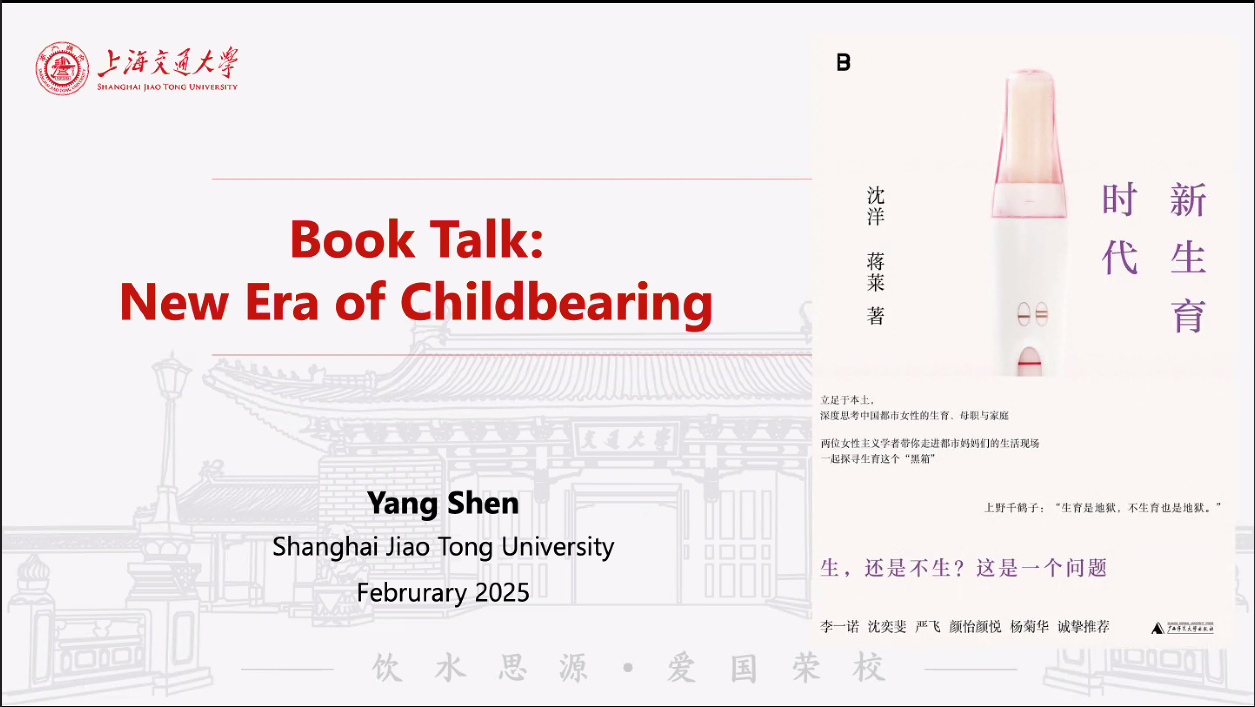
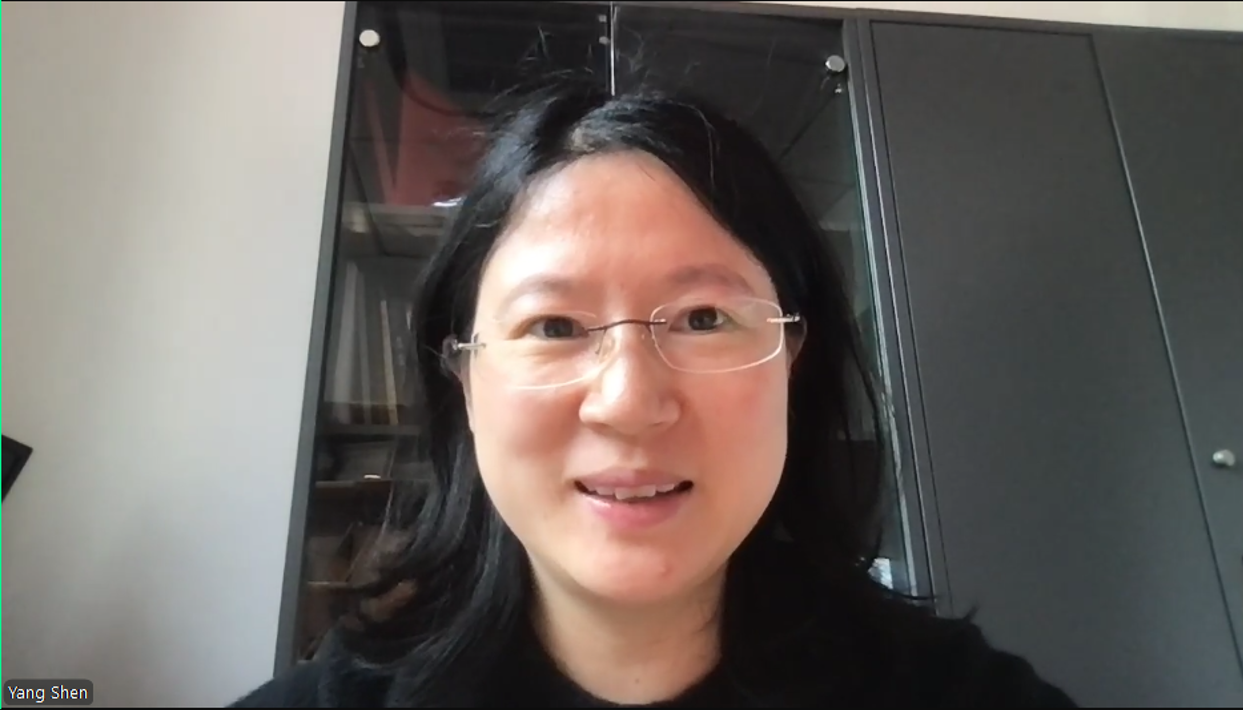
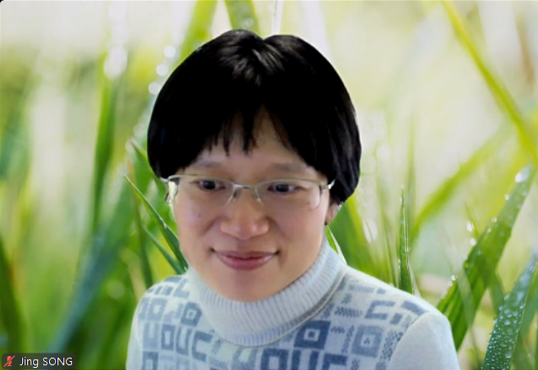
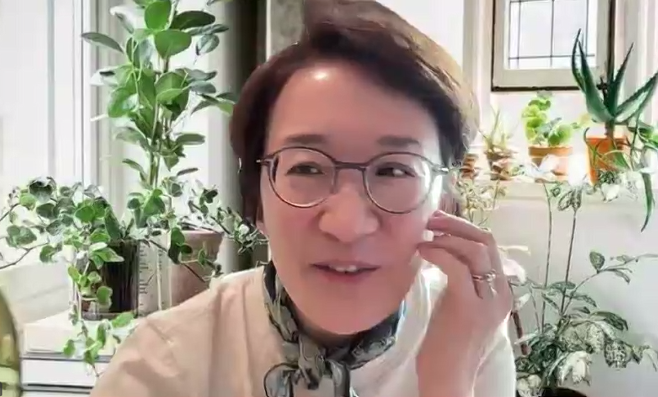
A
A
A
聯絡我們